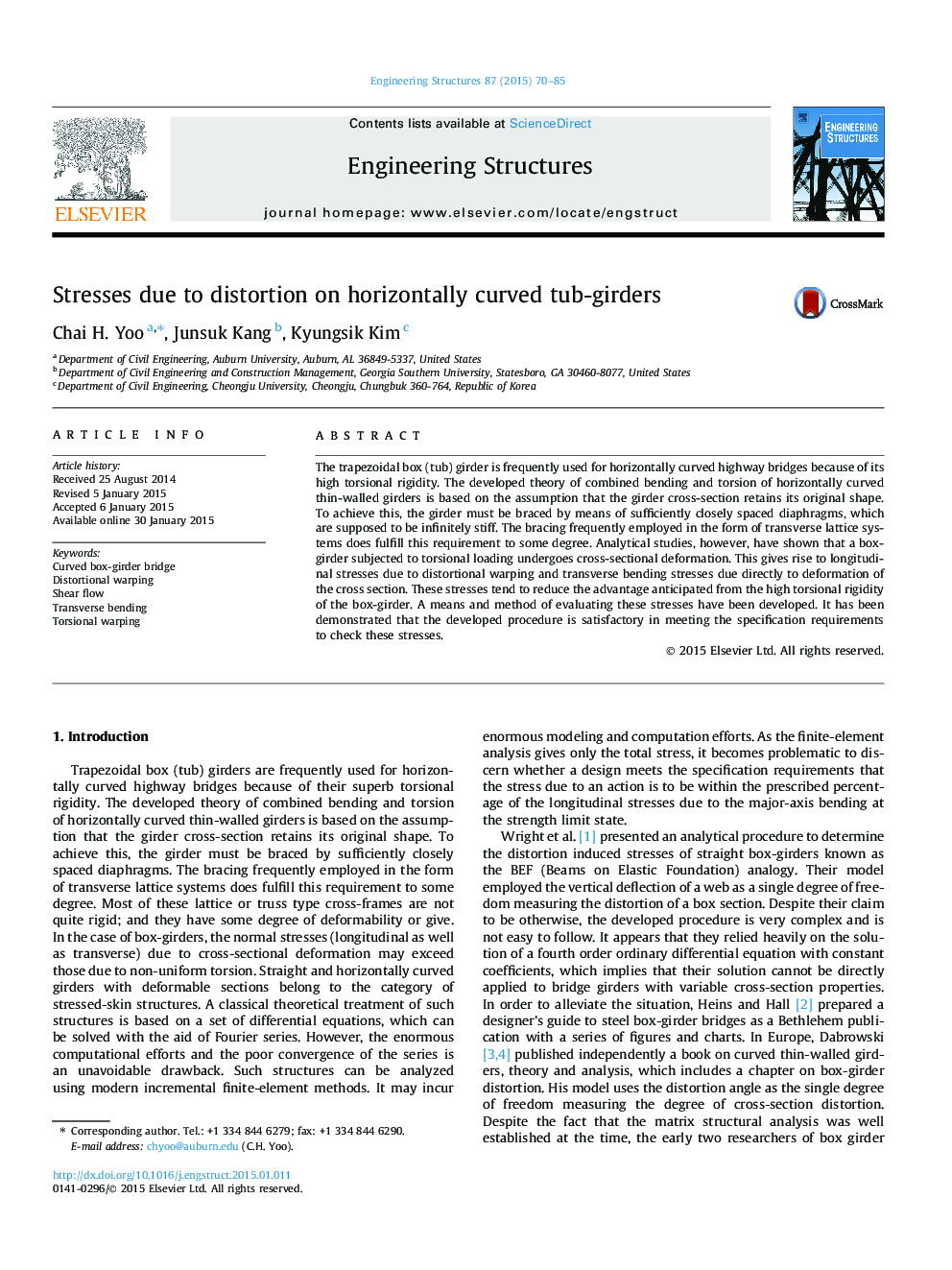| Article ID | Journal | Published Year | Pages | File Type |
|---|---|---|---|---|
| 266416 | Engineering Structures | 2015 | 16 Pages |
•The study presents a methodology for the distortion induced stress analysis of curved tub-girders.•Many new equations were formulated for tub-girders with overhangs.•A major oversight of a previous developer was detected.•The study discovered two completely different ways for the distortional warping constant.•It is now possible to conduct the specification-required distortion induced stress checks.
The trapezoidal box (tub) girder is frequently used for horizontally curved highway bridges because of its high torsional rigidity. The developed theory of combined bending and torsion of horizontally curved thin-walled girders is based on the assumption that the girder cross-section retains its original shape. To achieve this, the girder must be braced by means of sufficiently closely spaced diaphragms, which are supposed to be infinitely stiff. The bracing frequently employed in the form of transverse lattice systems does fulfill this requirement to some degree. Analytical studies, however, have shown that a box-girder subjected to torsional loading undergoes cross-sectional deformation. This gives rise to longitudinal stresses due to distortional warping and transverse bending stresses due directly to deformation of the cross section. These stresses tend to reduce the advantage anticipated from the high torsional rigidity of the box-girder. A means and method of evaluating these stresses have been developed. It has been demonstrated that the developed procedure is satisfactory in meeting the specification requirements to check these stresses.
